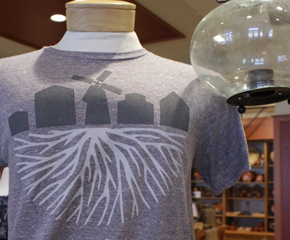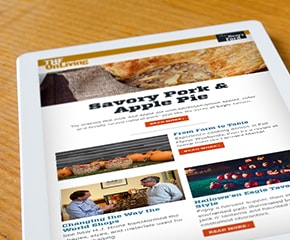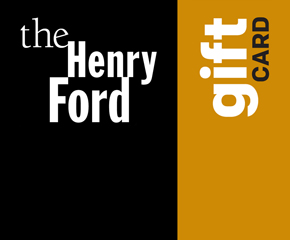
John Burroughs Papers
Primarily writings by and photographs of naturalist and philosopher John Burroughs and his family and friends.
Biographical / Historical Note
John Burroughs was born on April 3, 1837 on his family's farm in Roxbury, New York. As a child he spent much of his time reading, writing, and working on the farm. He attended the Hedding Literary Institute and the Cooperstown Seminary before leaving...
MoreJohn Burroughs was born on April 3, 1837 on his family's farm in Roxbury, New York. As a child he spent much of his time reading, writing, and working on the farm. He attended the Hedding Literary Institute and the Cooperstown Seminary before leaving home to become a teacher. Burroughs began keeping journals in 1854 when he was seventeen. His first published essay was "Fragments from the Table of an Intellectual Epicure" in 1860 and his first significant published piece was "Expression" in the Atlantic Monthly that same year.
Burroughs married Ursula North in 1857. Soon after, the couple moved to Washington, D.C. where Burroughs worked for the U.S. Treasury. In 1871 he took a position as a bank examiner in New York and built his home Riverby on a vineyard in West Park. In 1881 he constructed his Bark Study just off the main house, a retreat where he added to his growing body of essays and other work. By 1885 he gave up his bank position to write and enjoy his environment. Later, Burroughs would divide his time between Slabsides, his summer retreat at West Park and Woodchuck Lodge in Roxbury. Burroughs essays ranged from studies of birds and nature to religion and literature and his work was enjoyed by scholars and laypeople alike. Publishing widely, Burroughs became well known and received numerous awards and honorary degrees. He and his wife had one adopted son, Julius.
LessScope and Content Note
The papers are comprised of four series. The Education Related Material series, 1854- 1901 (0.2 cubic ft.) contains a teaching certificate, two school catalogs, a letter of recommendation, and a set of thank you letters. The letters were sent from...
MoreThe papers are comprised of four series. The Education Related Material series, 1854- 1901 (0.2 cubic ft.) contains a teaching certificate, two school catalogs, a letter of recommendation, and a set of thank you letters. The letters were sent from a class of children for whom Burroughs had led a nature walk. The Writings series, 1856-1907 and undated (0.2 cubic ft.) holds several handwritten manuscripts, a poem, an account book, and three periodicals that have articles written by Burroughs. There is also a unique wildflower album with a bark cover created by Burroughs in 1898. Burroughs creativity is also documented in two volumes of artwork, design layout, proofs and type repros for the limited edition book, In Nature's Laboratory, which records the camping trip in 1916 of Burroughs, Edison, and Firestone. The Photographs series, 1882-1915 and undated (2.0 cubic ft.) includes a two volume Souvenir of the Harriman Alaska Expedition, 1899; an album of cartes de visite portraits of friends and family; a set of thirty-seven glass plate negatives (images taken by Burroughs son, Julius); and a subseries of snapshots and photographs of Burroughs with friends, family, visitors and his homes and travels. A Miscellaneous series, 1896-1909 (0.2 cubic ft.) is comprised of a handprint of John Burroughs and several pages from a scrapbook. Researchers should note that handwritten notes describing some of the material were made by the donor, Elizabeth Burroughs Kelley, granddaughter of John Burroughs.
LessCollection Details
Object ID: 93.205.0
Creator: Burroughs, John, 1837-1921
Inclusive Dates: 1854-1915
Size: 3.6 cubic ft.
Language: English
Collection Access & Use
Item Location: Benson Ford Research Center
Access Restrictions: The papers are open for research.
Credit: From the Collections of The Henry Ford.
Digitized Artifacts From This Collection
In many cases, not all artifacts have been digitized.
Contact us for more information about this collection.
Teaching Certificate for John Burroughs, from Orange Township, New Jersey, February 7, 1860
Artifact
Certificate
Date Made
05 February 1860
Summary
Before John Burroughs (1837-1921) became an internationally known naturalist and writer he earned a living as a teacher. In 1860, Burroughs -- twenty-three, married and an aspiring writer -- taught briefly in Essex County, New Jersey. Later that year he wrote an essay that was published in the Atlantic Monthly. The article gained widespread recognition and changed the course of Burroughs's life.
Creators
Place of Creation
Object ID
93.205.144
Credit
From the Collections of The Henry Ford.
Location
By Request in the Benson Ford Research Center
Get more details in Digital Collections at:
Teaching Certificate for John Burroughs, from Orange Township, New Jersey, February 7, 1860
What is The Henry Ford?
The national attraction for discovering your ingenuity while exploring America’s spirit of innovation. There is always much to see and do at The Henry Ford.


Letter to John Burroughs from Morrison DeWitt, a Student Thanking Him for a Nature Walk, May 16, 1901
 Details
Details
Letter to John Burroughs from Morrison DeWitt, a Student Thanking Him for a Nature Walk, May 16, 1901
Artifact
Letter (Correspondence)
Date Made
16 May 1901
Summary
In May 1901, John Burroughs traveled to the State Normal School in New Paltz, New York, to share his love of nature with the students. On a hike he discussed the local landscape and made observations about the natural world -- the group even found a quail's nest with eggs. Students later wrote thank you notes and invited Burroughs back for a future visit.
Creators
Place of Creation
Keywords
Object ID
93.205.125.4
Credit
From the Collections of The Henry Ford.
Location
By Request in the Benson Ford Research Center
Get more details in Digital Collections at:
Letter to John Burroughs from Morrison DeWitt, a Student Thanking Him for a Nature Walk, May 16, 1901
What is The Henry Ford?
The national attraction for discovering your ingenuity while exploring America’s spirit of innovation. There is always much to see and do at The Henry Ford.


Letter to John Burroughs from Alida Shoommaker, a Student Thanking Him for a Nature Walk, May 16, 1901
 Details
Details
Letter to John Burroughs from Alida Shoommaker, a Student Thanking Him for a Nature Walk, May 16, 1901
Artifact
Letter (Correspondence)
Date Made
16 May 1901
Summary
In May 1901, John Burroughs traveled to the State Normal School in New Paltz, New York, to share his love of nature with the students. On a hike he discussed the local landscape and made observations about the natural world -- the group even found a quail's nest with eggs. Students later wrote thank you notes and invited Burroughs back for a future visit.
Creators
Place of Creation
Keywords
Object ID
93.205.125.10
Credit
From the Collections of The Henry Ford.
Location
By Request in the Benson Ford Research Center
Get more details in Digital Collections at:
Letter to John Burroughs from Alida Shoommaker, a Student Thanking Him for a Nature Walk, May 16, 1901
What is The Henry Ford?
The national attraction for discovering your ingenuity while exploring America’s spirit of innovation. There is always much to see and do at The Henry Ford.



Letter to John Burroughs from Stanley Tracy, a Student Thanking Him for a Nature Walk, May 16, 1901
 Details
Details
Letter to John Burroughs from Stanley Tracy, a Student Thanking Him for a Nature Walk, May 16, 1901
Artifact
Letter (Correspondence)
Date Made
16 May 1901
Summary
In May 1901, John Burroughs traveled to the State Normal School in New Paltz, New York, to share his love of nature with the students. On a hike he discussed the local landscape and made observations about the natural world -- the group even found a quail's nest with eggs. Students later wrote thank you notes and invited Burroughs back for a future visit.
Creators
Place of Creation
Keywords
Object ID
93.205.125.13
Credit
From the Collections of The Henry Ford.
Location
By Request in the Benson Ford Research Center
Get more details in Digital Collections at:
Letter to John Burroughs from Stanley Tracy, a Student Thanking Him for a Nature Walk, May 16, 1901
What is The Henry Ford?
The national attraction for discovering your ingenuity while exploring America’s spirit of innovation. There is always much to see and do at The Henry Ford.










John Burroughs' Album of Pressed Wildflowers Gathered during the Harriman Alaska Expedition, 1899
 Details
Details
John Burroughs' Album of Pressed Wildflowers Gathered during the Harriman Alaska Expedition, 1899
Artifact
Album (Book)
Date Made
1899
Summary
In 1899, John Burroughs joined a group of more than 20 scientists, naturalists, and artists for a scientific exploration of the Alaskan coast. Financed and accompanied by railroad tycoon Edward H. Harriman, the expedition traveled aboard the lavishly refitted George W. Elder, collecting specimens along the way. Those specimens included native wildflowers, hand-picked by Burroughs and pressed into this book.
Creators
Keywords
United States, Alaska, Hall Island
United States, Alaska, Kodiak Island
United States, Alaska, Port Clarence
Object ID
93.205.123
Credit
From the Collections of The Henry Ford.
Location
By Request in the Benson Ford Research Center
Get more details in Digital Collections at:
John Burroughs' Album of Pressed Wildflowers Gathered during the Harriman Alaska Expedition, 1899
What is The Henry Ford?
The national attraction for discovering your ingenuity while exploring America’s spirit of innovation. There is always much to see and do at The Henry Ford.
Essay by John Burroughs, "On Instinct," 1906-1907
Artifact
Essay
Date Made
1906-1907
Creators
Object ID
93.205.120
Credit
From the Collections of The Henry Ford.
Location
By Request in the Benson Ford Research Center
Get more details in Digital Collections at:
Essay by John Burroughs, "On Instinct," 1906-1907
What is The Henry Ford?
The national attraction for discovering your ingenuity while exploring America’s spirit of innovation. There is always much to see and do at The Henry Ford.
Poem by John Burroughs, "An October Day," 1891-1901
Artifact
Poem
Date Made
1891-1901
Summary
John Burroughs (1837-1921) was an internationally known naturalist and writer. Identified mainly as an essayist--a writing form at which he excelled, Burroughs' works also included poetry. Burroughs, however, felt out of his element writing poems and was often self-critical of his output. Nonetheless, he kept composing, creating these verses for his wife.
Creators
Place of Creation
Object ID
93.205.119
Credit
From the Collections of The Henry Ford.
Location
By Request in the Benson Ford Research Center
Get more details in Digital Collections at:
Poem by John Burroughs, "An October Day," 1891-1901
What is The Henry Ford?
The national attraction for discovering your ingenuity while exploring America’s spirit of innovation. There is always much to see and do at The Henry Ford.










Anthology of Writings by John Burroughs Students in Buffalo Grove, Illinois, 1857, "The Snowdrops"
 Details
Details
Anthology of Writings by John Burroughs Students in Buffalo Grove, Illinois, 1857, "The Snowdrops"
Artifact
Anthology
Date Made
04 March 1857
Summary
Before John Burroughs (1837-1921) became an internationally known naturalist and writer he earned a living as a teacher. Burroughs began teaching in 1854 at a small district school in New York not far from where he grew up. In late 1856 Burroughs moved to Buffalo Grove, Illinois. He stayed until the spring of 1857. This book of essays and poetry was prepared for him by his students.
Creators
Place of Creation
Object ID
93.205.149
Credit
From the Collections of The Henry Ford.
Location
By Request in the Benson Ford Research Center
Get more details in Digital Collections at:
Anthology of Writings by John Burroughs Students in Buffalo Grove, Illinois, 1857, "The Snowdrops"
What is The Henry Ford?
The national attraction for discovering your ingenuity while exploring America’s spirit of innovation. There is always much to see and do at The Henry Ford.
Reproduction of the 1856 Essay by John Burroughs, "Work and Wait"
Artifact
Essay
Summary
Naturalist John Burroughs penned this composition during his college preparatory studies at Cooperstown Seminary. This was an early foray into essay writing in which Burroughs would excel. The photostatic reproduction of this essay, pictured above, was used by Clara Barrus, Burroughs' literary executor and official biographer, for her book The Life and Letters of John Burroughs, published in 1925.
Creators
Object ID
35.530.3
Credit
From the Collections of The Henry Ford.
Location
By Request in the Benson Ford Research Center
Get more details in Digital Collections at:
Reproduction of the 1856 Essay by John Burroughs, "Work and Wait"
What is The Henry Ford?
The national attraction for discovering your ingenuity while exploring America’s spirit of innovation. There is always much to see and do at The Henry Ford.

























